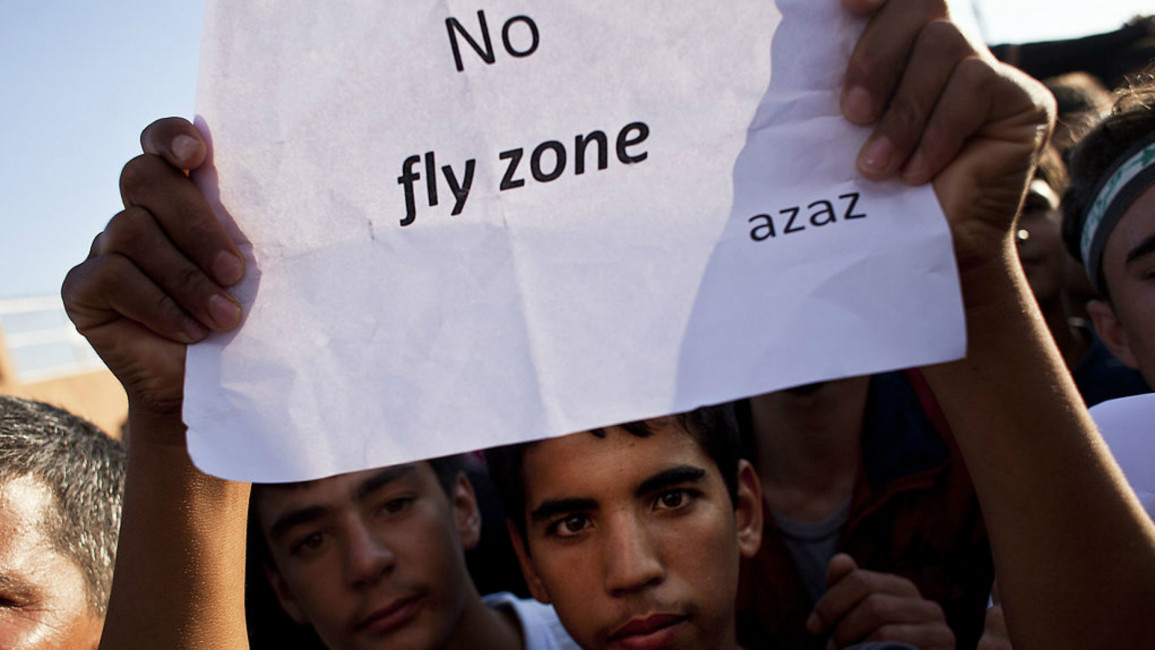
Has an unofficial no-fly zone emerged in northern Syria?
Following these incidents, Pentagon Spokesman Peter Cook warned the Syrian Regime that they and "anyone else who may threaten our force in that area that we will defend them and they have a right to defend themselves". Yet he also added that "it's not a no-fly zone". This warning was officially conveyed to the Syrian regime via the Russian military but it leaves us with an unusual and uncertain state of affairs.
The political, legal and technical consequences of a US no-fly zone are immense and would signify a step change in Washington's approach to the conflict. Back in 2013 the Chairman of the Joint Chiefs of Staff warned Congress that imposing a no-fly zone over Syria would cost as much as $1 billion a month, require thousands of US troops and put American aircraft at risk of being shot down.
Despite Obama claiming that the Syrian conflict is responsible for turning his hair grey, there is no evidence to suggest that he is looking to use the end of his presidency to change course in the country. There are currently only 300 American troops in Syria for training, advising and assisting local forces. Their role is not to engage in combat, however they have returned fire when attacked, and according to CNN have in the past moved in to assist local forces when they are under fire and even taken casualties.
 |
It would appear that the US is drawing yet another red line as to the behaviour of the Assad regime, and that it has imposed a "fly but no-bomb zone" |  |
Various opposition groups and civil society campaigners have been calling for a no-fly zone since the escalation of the conflict from street protests to grinding urban combat. The emergence of barrel bombs in particular became a symbol of the conflict, their rudimentary and indiscriminate nature devastating Syrian cities and causing untold death and destruction.
Kenneth Roth of HRW once wrote that "stopping Assad's barrel bombs is now the most urgent task to reduce their (the Syrian people) suffering". An Avaaz petition that called on world leaders to enforce a no-fly zone over northern Syria received over a million signatures yet the realpolitik of what it would mean has seen little action.
Have the events of the last few weeks changed this equation?
It would appear that the US is drawing yet another red line as to the behaviour of the Assad regime, and that it has imposed a "fly but no-bomb zone" on its aircraft operating near its supported forces. The US plans to back "moderate" groups has been beset by recruitment and operational issues since its inception. In June one such group was reportedly "routed" when they attempted to take the eastern border town of Abu Kamal from IS.
Last year, USA Today produced a scathing report that claimed "the Pentagon's failed Syria program cost $2 million per trainee". This is useful background information to understand the situation today as it appears that Washington isn't willing to see its latest supported forces destroyed from above by the Assad regime.
 |
It is highly unlikely that the US will physically protect Kurdish groups from Turkish or even Russian attacks |  |
So we now have a stand-off of sorts, as the truce between the Syrian regime and Syrian Kurdish factions appears to be over following the Kurdish takeover of Hassakeh this month. With the US now saying it will protect its Kurdish allies from regime attack the situation is made even more complicated by the latest Turkish operation to take the town of Jarabulus from IS.
Ankara was concerned that the Kurds may have been eyeing up the town and moved on it with US military backing and diplomacy from Washington holding the reigns on more Kurdish advances. However, it is highly unlikely that the US will physically protect Kurdish groups from Turkish or even Russian attacks which again reflects on how partial and targeted the current "fly but no-bomb zone" actually is.
Nevertheless, the US decision to show a willingness to put its pilots at risk of air to air combat with regime planes, and its clear verbal warnings that followed, do represent a shoring up of Washington's Syria policy. Sadly, the notion that Syrian civilians will be protected from aerial assault remains as distant as ever, as the death toll continues to rise.
James Denselow is an author and writer on Middle East politics and security issues. He is a former board member of the Council for Arab-British Understanding (CAABU) and a director of the New Diplomacy Platform. Follow him on Twitter: @jamesdenselow




